

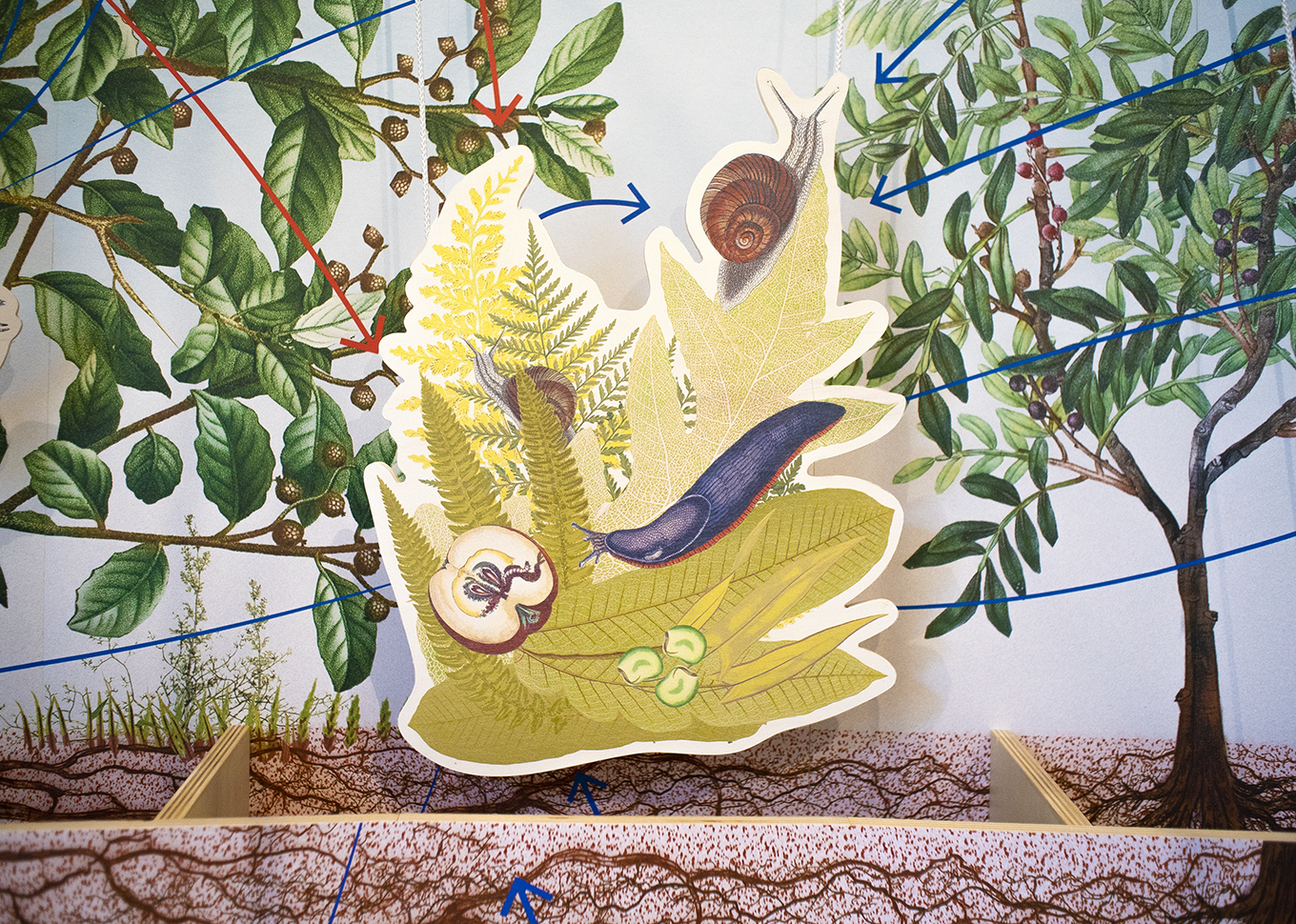
Every ecosystem on our planet – oceans, marshes, grasslands, deserts – functions thanks to the interactions between the species that make it up. Each species has one or more functions that are unique to it and remain essential to the others. Removing one of these links, particularly as a result of human action (destruction of habitats, pollution, overexploitation, climate change, etc.), is tantamount to disrupting and unbalancing the entire chain of life. The richer an ecosystem is in terms of diversity and interactions, the stronger and more resistant it is to disturbances.
How does a forest function? Which organisms are necessary for its development? What is the impact on the ecosystem if one link in the chain disappears?
Designed for the “Encountering Life” exhibition at the Good Planet Foundation, the mechanics of life is an educational device that helps to understand the interdependent relationships between the species living within European forests.
With the help of ropes, visitors bring out the fauna and flora, and thus reconstitute an ecosystem composed of plants, trees, herbivores, pollinators, carnivores and decomposers.
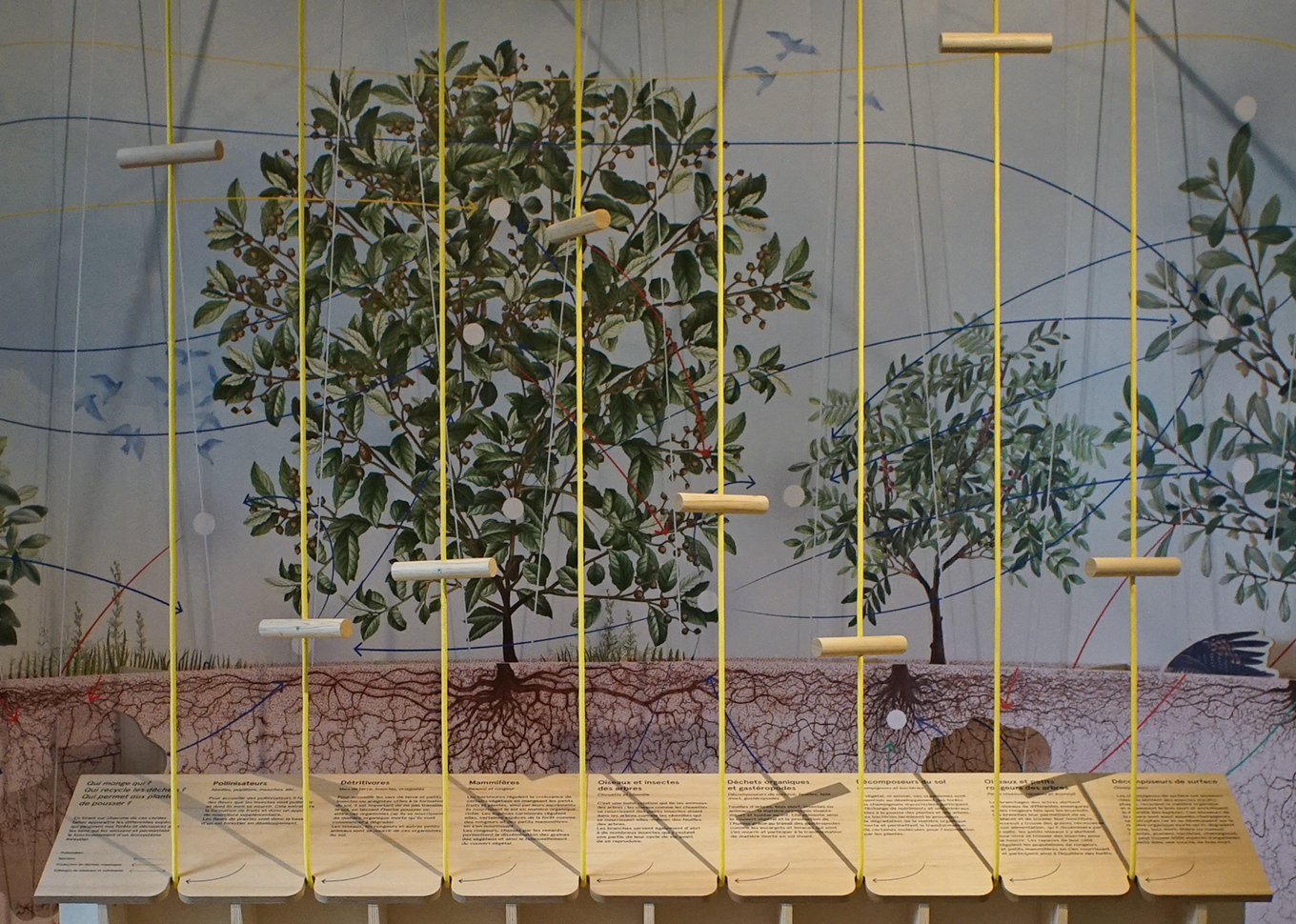
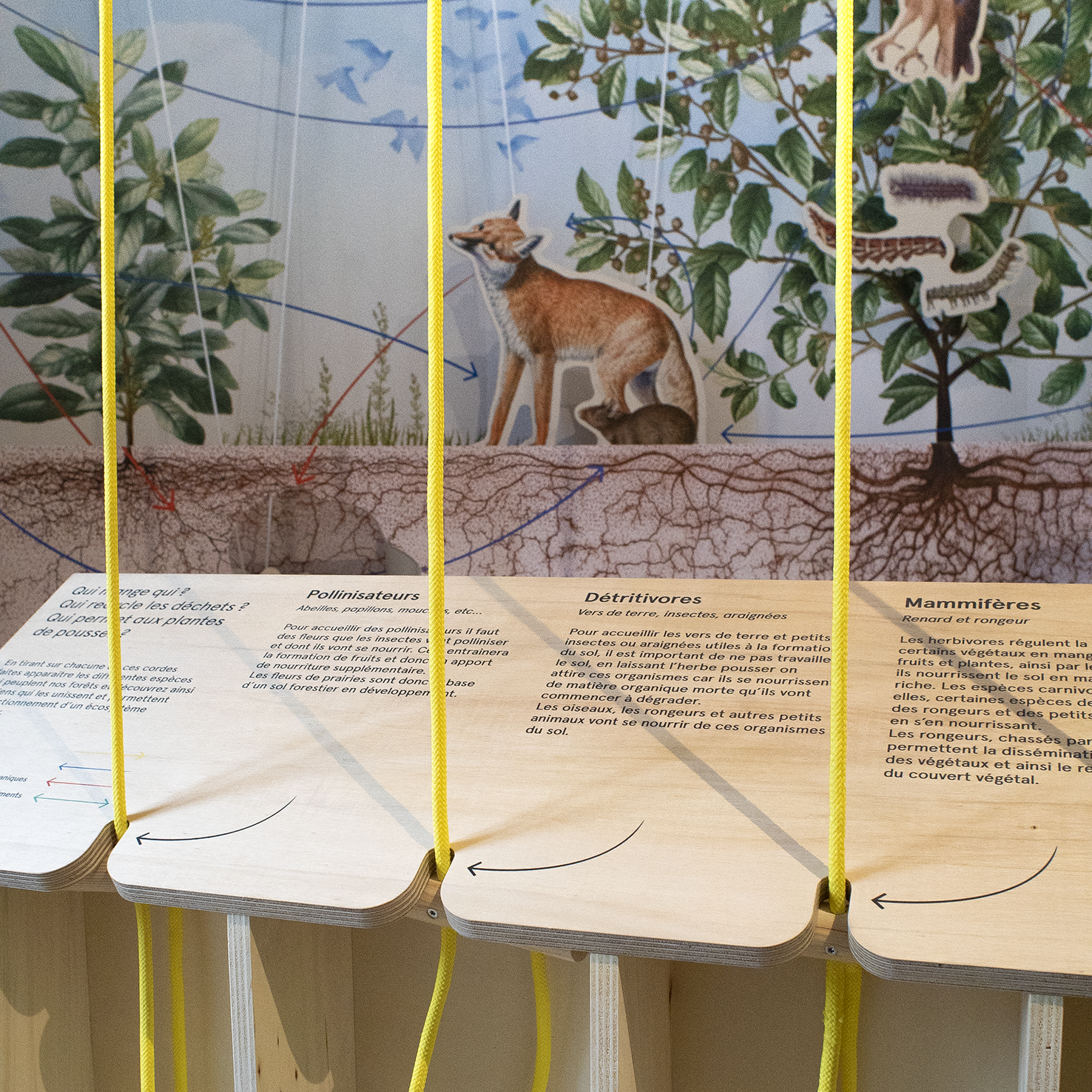
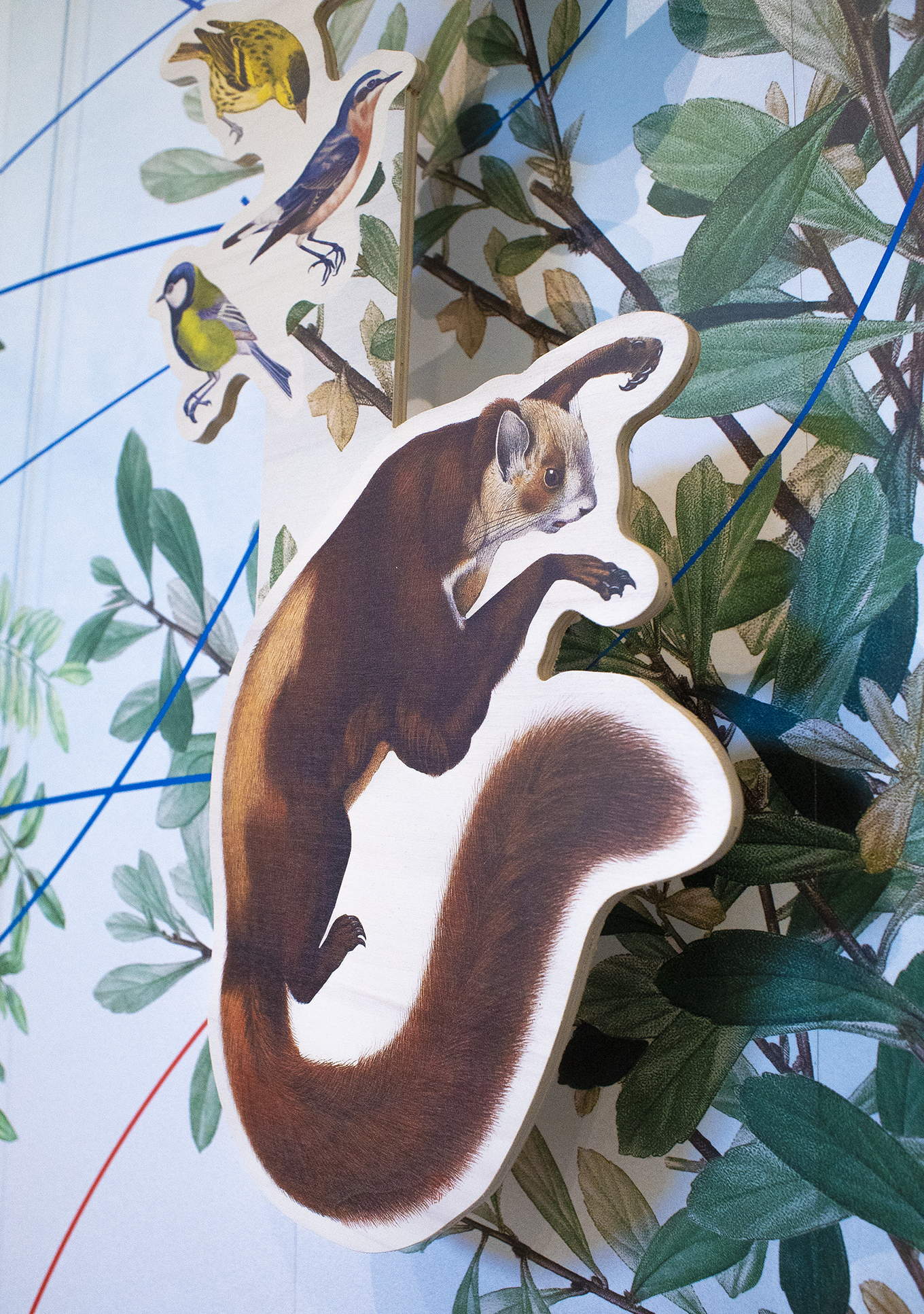
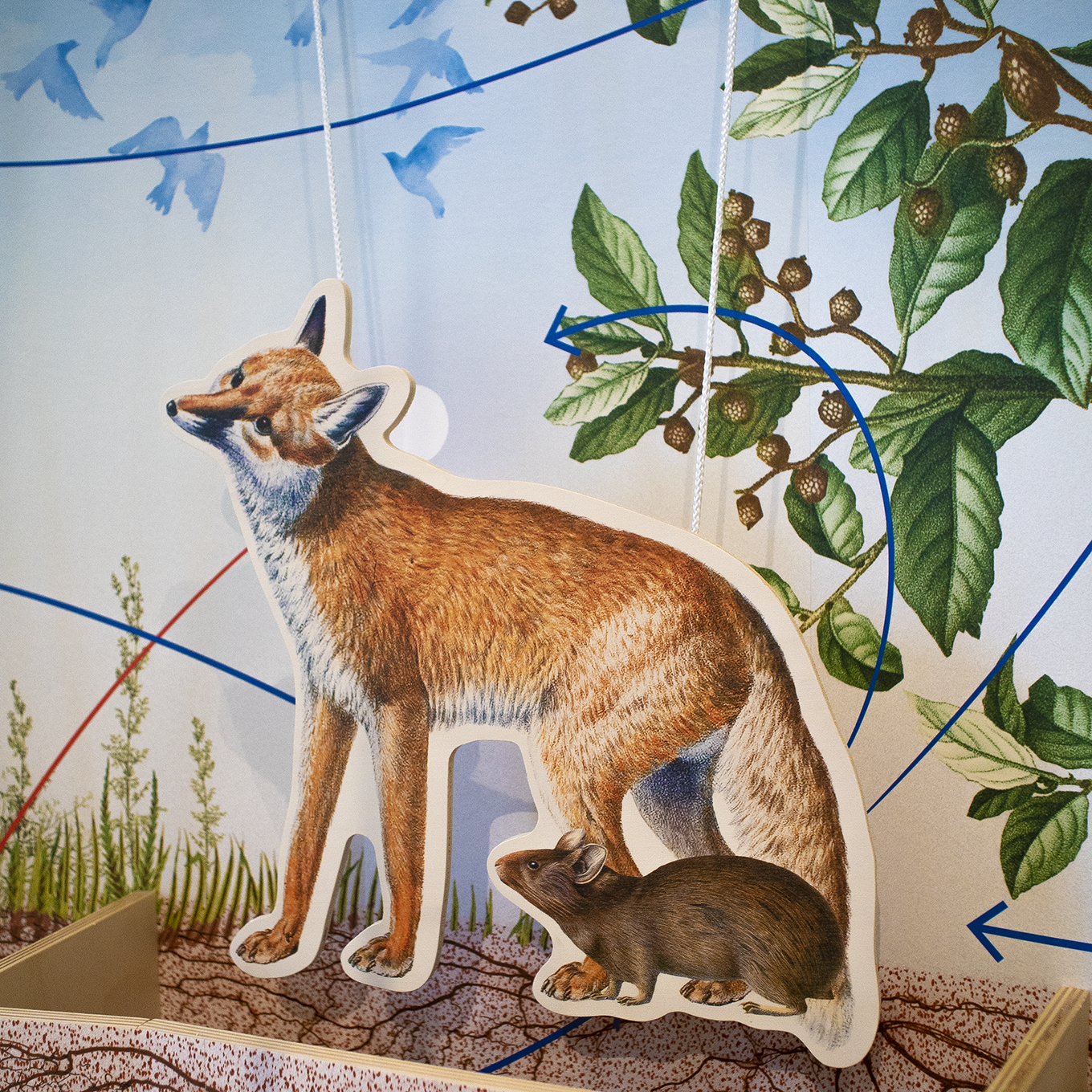
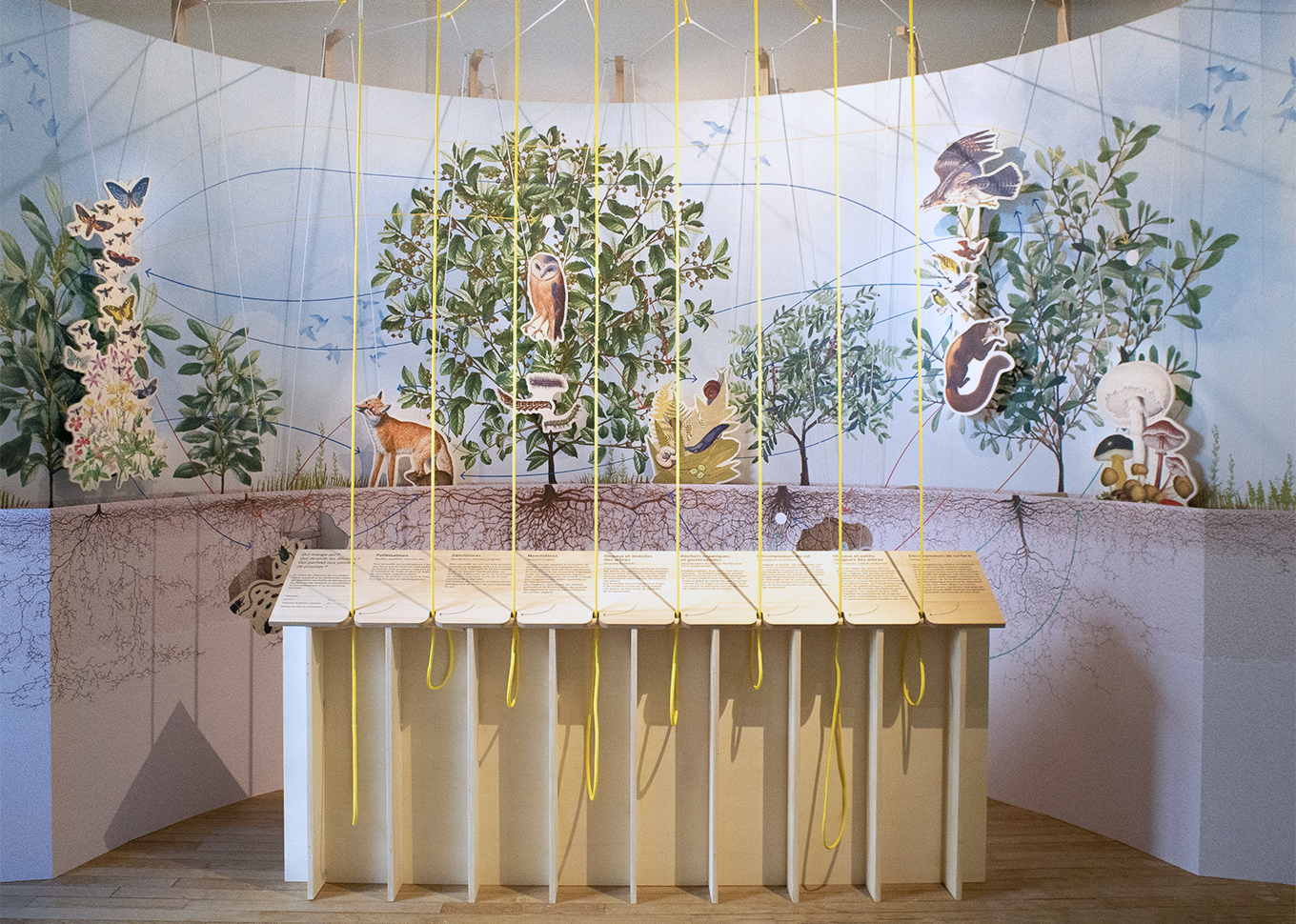
2023
Photos and video credits: Jonathan Roditi
Design team: Studio Idaë (Jonathan Roditi, Isabelle Daëron, Pauline Avrillon, Léa Michielin (intern))
Production: SOLID
Coordination: Artistik Bazaar (Marine Birot)
Client: Fondation Good Planet

Home office: 17 rue Dombasle 75015 Paris
Workshop: 111bis rue Molière 94200 Ivry-sur-Seine
contact@studioidae.com
A multidisciplinary creative agency founded by Isabelle Daëron in 2018, Studio Idaë arose from a reflection on the use of natural flows — water, air, light — in public space.
The Studio has, ever since, developed an approach based on research and education, focusing on the urban, environmental and societal challenges of the ecological transition.
Driven by a poetical & committed team of designers, Studio Idaë applies its refined, assertive graphic signature to projects of various scales. From urban devices to mediation objects and supports, or scenography, the agency’s protean contributions always strive at others — their needs, their desires, and their evolution.
The agency operates within a network of local companies and collaborates with dedicated craftspeople to adapt to the specific characteristics of each territory. Together, they work towards the most appropriate and relevant response — between narration and mediation.
Pauline Avrillon, product designer graduated from École Boulle joined the studio in 2017, and works on urban design projects. Angèle Fourteau, product designer graduated from ECAL works on set design projects since 2022. Eléna Hervé Caro joined the team in 2023 as office manager.
Graphic design : Audrey Templier
Web development : Francis Josserand